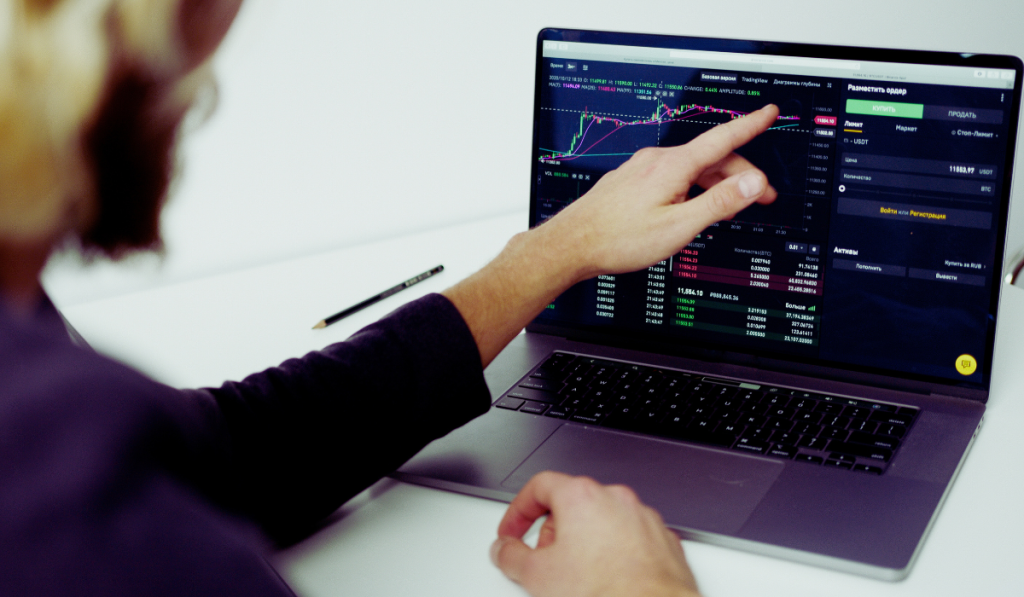What is Options Trading – A Complete Beginner’s Guide
As in any other sphere, in the world of financial markets, there are various opportunities to play and stake money. There are individuals who invest in stocks, and they keep them in the long term. The others plunge into forex, commodities, or crypto. However, there is one more strategy that combines flexibility, leverage, and risk management options trading.
When you have heard traders talking about calls, puts, strikers, or strike prices, then they are talking about options. The concept might shock you initially, but when it is guided by the right advice, options trading can be mastered and utilized by even an ordinary investor. No longer does it belong to the world of professionals or Wall Street insiders.
Learning what options trading is might be a key to new strategies and smarter investments.

Unpicking the Fundamentals
Options are financial means whereby a trader is entitled to purchase or sell a specified asset but is not bound, to do so, at a specified price, within a stipulated time. That is the basis.
These contracts are made up of stocks or ETFs, indexes, or even commodities and serve different purposes: speculation, hedging, or generation of income. As compared to purchasing the actual stock, you can buy an option and control an asset without owning it
.
Options fall into two.
- Call options: It involves being able to buy the underlying asset.
- Put options: Draw the privilege of sale of the underlying asset.
Suppose that you think a stock will rise. You may purchase a call to make money out of that move. When you believe that a stock price will decline, the put option will enable you to profit in declining conditions.
Options Trading explained
An options contract symbolizes 100 shares of the concerned stock. The price of acquiring an option is termed the premium. It depends on such factors as the price of an asset, its volatility, and the time before expiration, etc.
As an illustration of how a call option works; say at the beginning of the week you buy a call option on a stock that is selling at 100, the call option strike is at 105 and the contract will expire in 30 days. You are speculating that in the next 30 days the stock will rise to above 105 and when the contract expires you can buy the stock (which is now worth 105) at 100.
Having said that, you will be able to exercise that option and purchase the stock at $105 when the price is well into the nineties, say at $110, giving you a profit. Assuming that the price does not exceed the amount to $105, it means that the option will expire and you will lose the amount of premium you paid.
This is the reason why options are attractive. Depending upon the strategy, you can make profit in a bullish, bearish or even a sideways market.
Why not trade stocks as opposed to options?
Leverage is one of the largest attractions to traders seeking and focusing on options. You may have control over 100 shares of a $100 stock (valued at 10,000) with only a few hundred dollars worth of an option. This puts potential in the way of higher percentage gains, but with commensurate risk.
The other advantages are:
- Minimum risk in the purchase of options (you can not lose beyond the premium).
- It has several strategies that enable it to hedge or gain profit depending on the conditions in the market.
- Easy time frames – brief fun strategies for long-term situations.
- Generating income by writing, e.g., covered calls.
Unlike the classical ways of trading stocks, option provides traders with more instruments to overcome uncertainty, volatility, and evolving tendencies.
Popular Tactics in Option Trading
Once you know the principles of what is options trading there is a need to know how various strategies come into operation. The trading of calls or puts are not a random occurrence as traders develop strategic positions.
These are some of the common strategies:
Covered Call
You own a stock and sell a call against the same. This fetches you high returns but limits your gains. It is a conservative manner of earning additional returns.
Protective Put
You sell the stock, but you purchase a put option as hedge. In case the stock price falls, your loss could be controlled. It is insurance to your investment.
Straddle
You purchase call and put both at the same strike price with anticipation of huge movement both up or down. The application of the strategy can be seen during earnings releases or big news announcements.
Vertical Spread
Puts together a purchase and sale of different strikes to lower the price and restrict the risk. Intermediate traders usually deal in spreads.
Iron condors, butterflies and calendars are just some of the dozens of strategies. They both possess individual risk and returns profile based on market sentiment and volatility.
Data on the Risks
The larger the potential rewards are, the larger the risks would be. Risk management is one of the most important things that every person learning what is options trading must know.
In certain situations, buying options may be safer because the maximum loss that could be incurred will only be the premium. Selling of the options (Particularly uncovered) can, on the other hand, put traders at risk of racking up huge losses unless they are managed effectively.
Option, too, decays with time-it is known as time decay. Options may turn out to be useless as the time to万丑kat approaches when the price fails to go in your direction.
Other risks are:
- The swings of volatility in the option pricing are unpredictable..
- Markets that are illiquid and more difficult to get in or out of markets
- Passions in decision-making, and especially in fast-moving markets
That is why such platforms as JoinX also become popular since they are used to facilitate the learning process, provide clients with all the educational opportunities, communities, and analyses of trades, so that newcomers also will not explore this world by themselves.
Starting Tool and Resource Box
It is wise that before getting into the market you practice accounts, study courses and trade using simulations. A great number of brokers have introduced demo trading platforms where you can practice without having to risk any money.
It is also useful to monitor the essential indicators:
- Delta = Hypersensitivity of the price of an option to the change in a stock.
- Theta: indicates the amount that the option value wears off as time passes.
Implied Volatility (IV): Indicates future price fluctuations and the higher an IV is, the more likely it is that the options will be expensive.
Next to having a trading journal and going back to trade review your trades and learn as little as possible, are the dividing lines between profitable and unprofitable options traders.
The Market of Today’s Options
Trading options has rapidly multiplied in the previous years. Retail participation has grown with reduced commissions, introduction of mobile trading apps and education of the market.
Nonetheless, it also implies an increase in the number of people who trade without really knowing what is options trading, and that often means making bad decisions and incurring loss.
The bottom line is that whether you trade options as an income generator, an officer of protection or a speculator, just remember you should respect them and have discipline. Begin with baby steps, employ sensible tactics and avoid chasing after unattainable profits.
In an informed and composed manner, options may be a thrilling addition to your entire financial tool kit.
Defining what is options trading will give a world of opportunities. Options have applications to small investors interested in hedging their bets, to sophisticated traders with complicated strategies in mind, options will offer tools and options that conventional investing never will.
